
Self
In 1998, documentary filmmaker Robert Drew and his associates attend the Museum of Tolerance.

Self
In the year 2000, Les Blank, along with co-filmmaker Gina Leibrecht, visited Richard Leacock (1921-2011) at his farm in Normandy, France and recorded conversations with him about his life, his work, and his other passion: cooking! With the flair of a seasoned raconteur, Leacock recounts key moments in his seventy years as a filmmaker and the innovations that he, D.A. Pennebaker, Albert Maysles and others invented that revolutionized documentary filmmaking, and explores the mystery of creativity. With the passing of both Blank and Leacock, the documentary is a moving insight into the lives of two seminal figures in the history of film.

Self
A 38-year journey that the director began in 1972 as a young filmmaker and, shooting off and throughout many years, the director filmed many and various encounters between Ricky, his friends and contemporaries including Henri Langlois, Jean Rouch, Jean-Luc Godard, DA Pennebaker, Robert Drew, and others. Mixing her own footage with film clips and rare images from Leacock's personal film archives, this film pays homage to the director's mentor and, most importantly, allows him to tell us the story of his long film making career in his own words.

Colleagues, friends and specialists pay tribute to the filmmaker Mario Ruspoli in a portrait that mixes encounters, archive images and film excerpts. With testimonies from Richard Leacock, Albert Maysles, Edgar Morin, D.A. Pennebaker and others.

Camera Operator
The classical nude as video in four male/female duets

Self
Short documentary on the life and work of photographer and filmmaker Morris Engel
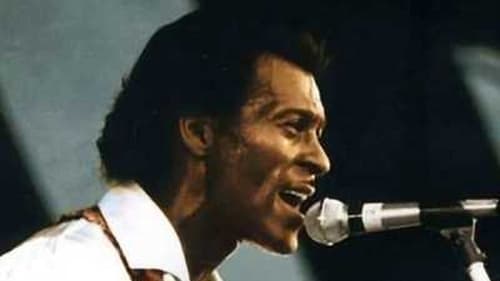
Camera Operator
A pioneer in the world of rock-'n'-roll guitar, Chuck Berry has created a legacy that spans decades. Berry performs some of his greatest hits and all-time favorites in this concert video that was filmed on September 13, 1969 at 'Toronto Rock'n'Roll Revival.' The Concert includes the songs "Rock and Roll Music," "Long Live Rock and Roll," "Johnny B. Goode," "Promised Land," "Carol," "Hoochie Koochie Man," "Maybellene," "Too Much Monkey Business," "Reelin' and Rockin'," "Sweet Little Sixteen" and "In the Wee, Wee Hours."

Self
An intimate window into one of the great movements in film history that brought about an evolution in the art of cinema. The documentary portrays the movement with insight on the lives and works of Jean-Luc Godard, François Truffaut and other principal players in the New Wave.

Director
Inspired by both new love and Gulliver's Travels, Les Oeufs à la Coque (aka Richard Leacock's Soft-Boiled Eggs), is a ravishingly beautiful, important film about nothing in particular, a love song dedicated to France, French women in general and one Frenchwoman in particular, and a montage portrait of quotidian life in a country at peace.
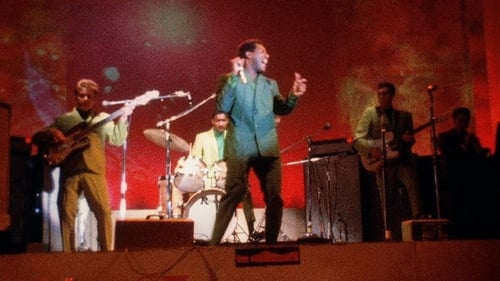
Camera Operator
Renowned documentary filmmaker D.A. Pennebaker captures Otis Redding in his ascendancy, singing at the historic Monterey International Pop Festival in June 1967. Comedian Tom Smothers introduces Redding to a crowd that is leaving -- until Redding grabs them with his charged rendition of "Shake." Redding's performance also includes "Respect" (which he wrote), "I've Been Loving You Too Long," "Satisfaction," and "Try a Little Tenderness." Tragically, Redding died in a plane crash six months later. An innovative filmmaker who started in the 1950s making experimental films, Pennebaker garnered an Oscar nomination for Best Documentary Feature in 1993 for The War Room, his behind-the-scenes look at Bill Clinton's 1992 campaign. His other subjects have included Norman Mailer, Bob Dylan, and David Bowie.
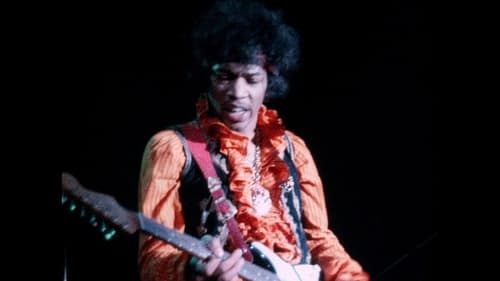
Camera Operator
It's no exaggeration to say this might be the most intense and groundbreaking 45-minute performance in the history of rock. Jimi Hendrix's debut American set at 1967's Monterey Pop Festival is generally considered one of the most radical and legendary live shows ever. Virtually unknown to American audiences at the time, even though he was already an established entity in the UK, Hendrix and his two-piece Experience explode on stage, ripping through blues classics "Rock Me Baby" and Howlin' Wolf's "Killing Floor," interpreting and electrifying Bob Dylan's "Like a Rolling Stone," debuting songs from his yet-to-be-released first album and closing with the now historic sacrificing/burning of his guitar during an unhinged version of "Wild Thing" that even its writer Chip Taylor would never have imagined. Hendrix uses feedback and distortion to enhance the songs in whisper-to-scream intensity, blazing territory that had not been previously explored with as much soul-frazzled power.

Director
55-Minute BBC Arena documentary on the film actress Louise Brooks
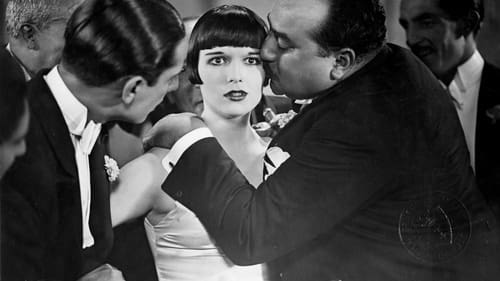
Interviewer
Vérité documentarian Richard Leacock’s LULU IN BERLIN features one of the few long interviews ever done with actor Louise Brooks. It took place in her apartment in Rochester, New York, in 1971.

Producer
Vérité documentarian Richard Leacock’s LULU IN BERLIN features one of the few long interviews ever done with actor Louise Brooks. It took place in her apartment in Rochester, New York, in 1971.

Director
Vérité documentarian Richard Leacock’s LULU IN BERLIN features one of the few long interviews ever done with actor Louise Brooks. It took place in her apartment in Rochester, New York, in 1971.

A portrait of the two documentary filmmakers Jerzy Bossak and Richard Leacock.

Director
This documentary examines one family's desperate search for faith and religious meaning in Muncie, Indiana.

Director
Film produced and directed by Ricky Leacock, Edward Pincus, and MIT Center for Advanced Visual Studies documenting the Centerbeam kinetic sculpture project and its first installation at documenta 6 in Kassel, Germany in 1977
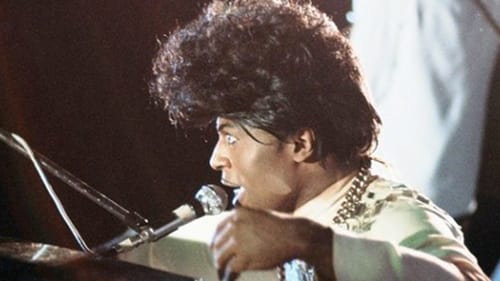
Director of Photography
Keep On Rockin', aka Little Richard: Keep On Rockin' (USA video title) is a film of a 1969 Little Richard concert at the Sweet Toronto Peace Festival, originally released in 1970. Richard performs a number of his greatest hits, including "Good Golly Miss Molly," "Long Tall Sally," and "Tutti Frutti." The film is in color.

Director
Lighter and livelier than the films Jean-Luc Godard had made in France, his U.S. collaboration with Direct Cinema documentarian D. A. Pennebaker was meant to be One A.M., as in “one American movie”; but Godard quit the project and the U.S., where to his dismay he discovered that revolution wasn’t imminent, and Pennebaker edited Godard’s material, to which he and Richard Leacock even added a bit more, releasing the result as One P.M., as in “one parallel movie.” It’s a stunning mixture of cinéma-vérité, political theater, and interviews of key sixties figures.
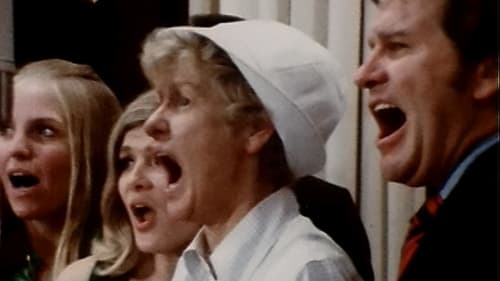
Director of Photography
In 1970, right after the triumphant premiere of Stephen Sondheim’s groundbreaking concept musical Company, the renowned composer and lyricist, his director Harold Prince, the show’s stars, and a large pit orchestra all went into a Manhattan recording studio as part of a time-honored Broadway tradition: the making of the original cast album. What ensued was a marathon session in which, with the pressures of posterity and the coolly exacting Sondheim’s perfectionism hanging over them, all involved pushed themselves to the limit.
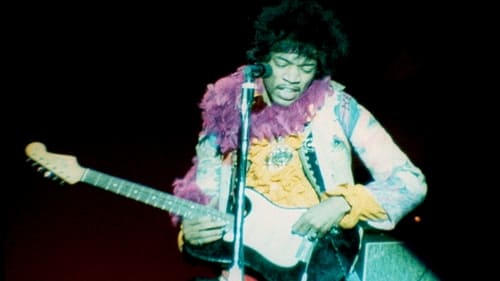
Camera Operator
Este documental muestra los mejores momentos del famoso festival californiano en 1967, incluyendo artistas como Mamas And The Papas, Simon & Garfunkel, Jefferson Airplane, The Who, Otis Redding o Jimi Hendrix Experience.

Director
Filmed at the October 1968 meeting in Hawaii of several hundred police chiefs of the International Association of Chiefs of Police as they watch demonstrations of gruesome anti-riot weapons, sing patriotic songs, and defend their policies in front of the camera. Although filmed with the permission of the chiefs, the view is unsympathetic, sometimes funny, and more often frightening.

Director of Photography
Documentary look behind the scenes of La Caravelle, an acclaimed French restaurant in New York City.

Director
Leacock and Pennebaker filmed choreographer Merce Cunningham’s dance “RainForest” as part of the 1968 Buffalo Arts Festival’s program “Whose Afraid of the Avant-Garde” presenting experimental art, music, dance, poetry and theater. The dance composition also featured music by David Tudor, costumes by Jasper Johns and sets by Andy Warhol.

Director
Jean-Luc Godard visits the NYU in order to discuss his latest feature "La chinoise" with graduate students on filmmaking and politics.

Director of Photography
This documentary follows composer and conductor Igor Stavinsky at his home in California, in London, and in Hamburg where he conducts an orchestra rehearsal. Includes conversations with a variety of friends and musical collaborators. Includes footage of Stravinsky and Balanchine discussing the Variations (in memoriam Aldous Huxley) and rehearsing their ballet Apollo with Suzanne Farrell.

Editor
This documentary follows composer and conductor Igor Stavinsky at his home in California, in London, and in Hamburg where he conducts an orchestra rehearsal. Includes conversations with a variety of friends and musical collaborators. Includes footage of Stravinsky and Balanchine discussing the Variations (in memoriam Aldous Huxley) and rehearsing their ballet Apollo with Suzanne Farrell.

Director
This documentary follows composer and conductor Igor Stavinsky at his home in California, in London, and in Hamburg where he conducts an orchestra rehearsal. Includes conversations with a variety of friends and musical collaborators. Includes footage of Stravinsky and Balanchine discussing the Variations (in memoriam Aldous Huxley) and rehearsing their ballet Apollo with Suzanne Farrell.

Director
A documentary on the KKK

Producer
A film focusing on a day in the life of two identical twin girls, one of whom is blind and mentally handicapped

Director of Photography
This brief portrait follows 28-year-old campaign manager John Grenier as he maps out strategies for Barry Goldwater’s 1964 presidential run and engineers a takeover of the Republican convention.

Director
This brief portrait follows 28-year-old campaign manager John Grenier as he maps out strategies for Barry Goldwater’s 1964 presidential run and engineers a takeover of the Republican convention.

Director
Jazz vocalist Dave Lambert auditions a new group of singers at RCA Studios in 1964.

Director
In 1963 the first known surviving set of American quintuplets were born to Mary Ann and Andrew Fischer, this film looks at some of the changes their arrival caused to their family.

Director
The doc brings us back to a 1961 football game played in front of 40,000 people at the Orange Bowl. A high school football game, pitting Miami High against their rivals from Edison High. The title refers to the coaches of each, and the film follows them separately, with their real families and their clan of players, in the days leading up to the big event. And then at last it astonishingly chronicles the game from all kinds of angles you wouldn’t expect from even the newly mobile tools of the Drew crew. Today’s television coverage doesn’t come nearly as close to capturing the spirit of the sport and its fans the way Lipscomb does here. (Nothing But the Doc)

Director
The first candid film made on a foreign chief of state, three weeks in the life of Jawaharlal Nehru.

Director
The documentary traces Eddie Sachs (one of the most popular drivers in the history of the Indianapolis 500) in a behind-the-scenes look at the race from his perspective, starting from a week before the race through the day after the big event. You can feel the fervor and anticipation build (*pay close attention to the scaffolding that collapses with too many people on it during the race) as Eddie prepares to keep his place, "on the pole."
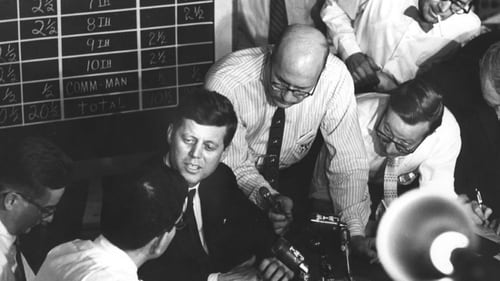
Director
A look at the daily business of U.S. President John F. Kennedy, with a focus on some of the political issues he faces six weeks into his term.

Director
A harrowing portrait of the struggle for school desegregation in New Orleans against the violent protests of white parents.

Cinematography
After the US forces Cuba out of the OAS, demonstrations erupt in Venezuela. In Cuba Castro addresses a rally of one million people.
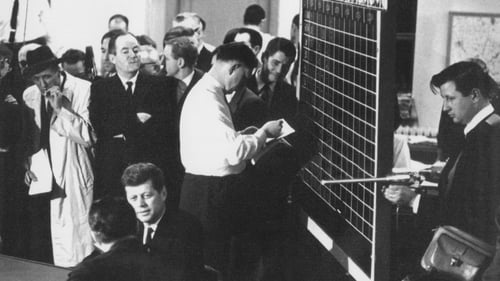
Editor
Primary is a documentary film about the primary elections between John F. Kennedy and Hubert Humphrey in 1960. Primary is the first documentary to use light equipment in order to follow their subjects in a more intimate filmmaking style. This unconventional way of filming created a new look for documentary films where the camera’s lens was right in the middle of what ever drama was occuring.

Camera Operator
Primary is a documentary film about the primary elections between John F. Kennedy and Hubert Humphrey in 1960. Primary is the first documentary to use light equipment in order to follow their subjects in a more intimate filmmaking style. This unconventional way of filming created a new look for documentary films where the camera’s lens was right in the middle of what ever drama was occuring.

Director of Photography
Twins Christopher and David gets into an untethered sailboat and inadvertently gets involved in a nearby sailboat race.

Director
Twins Christopher and David gets into an untethered sailboat and inadvertently gets involved in a nearby sailboat race.
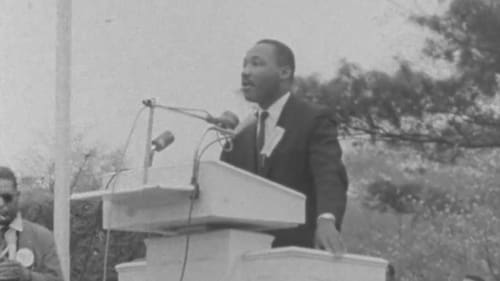
Camera Operator
Integration Report 1, Madeline Anderson's trailblazing debut, was the first known documentary by an African American female director. With tenacity, empathy and skill, Anderson assembles a vital record of desegregation efforts around the country in 1959 and 1960, featuring footage by documentary legends Albert Maysles and Richard Leacock and early Black cameraman Robert Puello, singing by Maya Angelou, and narration by playwright Loften Mitchell. Anderson fleetly moves from sit-ins in Montgomery, Alabama to a speech by Martin Luther King Jr. in Washington, D.C. to a protest of the unprosecuted death in police custody of an unarmed Black man in Brooklyn, capturing the incredible reach and scope of the civil rights movement, and working with this diverse of footage, as she would later say, “like an artist with a palette using different colors.”

Director of Photography
Primary is a documentary film about the primary elections between John F. Kennedy and Hubert Humphrey in 1960. Primary is the first documentary to use light equipment in order to follow their subjects in a more intimate filmmaking style. This unconventional way of filming created a new look for documentary films where the camera’s lens was right in the middle of what ever drama was occuring.

Director
An educational physics film utilizing a fascinating set consisting of a rotating table and furniture occupying surprisingly unpredictable spots within the viewing area, Leacock’s Frames of Reference (1960), features fine cinematography by Abraham Morochnik, and funny narration by University of Toronto professors Donald Ivey and Patterson Hume, in a wonderful example of the fun a creative team of filmmakers can have with a subject other, less imaginative types might find pedestrian.

Producer
An educational physics film utilizing a fascinating set consisting of a rotating table and furniture occupying surprisingly unpredictable spots within the viewing area, Leacock’s Frames of Reference (1960), features fine cinematography by Abraham Morochnik, and funny narration by University of Toronto professors Donald Ivey and Patterson Hume, in a wonderful example of the fun a creative team of filmmakers can have with a subject other, less imaginative types might find pedestrian.

Director
In the hands of another director, the inner-workings of a magnet laboratory could have caused a whole classroom to fall asleep of boredom. No so when Leacock was hired to produce this twenty-minute version of lab mayhem. Try this: six researchers in a lab at MIT in the late 1950's show-off the power of electro-magnets, and in the process, accidentally set an experiment on fire. Or this: half way through the film the phone rings off screen, and host Francis Bitter says "tell 'em I'll call 'em back later" while he's looking at the camera, discussing bus bars. Leacock’s fleshed out all the personalities here, from "Beans" Bardo, who cranks up the generator to nearly explosive proportions, to the mysterious Mr. Lin, who barely peeks over his shoulder at us, seemingly in mockery, disdain, or curiosity.

Cinematography
A coach’s whole career depends upon winning this football game, the U.S. Air Force Academy against the University of Colorado. The film was an early experiment by Drew and his Associates to capture real life happening in front of the cameras. They had not yet developed the new equipment that would allow portable sync-sound filming, so they improvised. Drew, who was still a correspondent for LIFE Magazine at the time, was trying to make films that would promote LIFE stories on television. This idea was how Drew had convinced Time-Life to bankroll his fledgling film unit. Although the football story never became a LIFE magazine cover story, it served as a kind of dry-run for a film about another football game covered by Drew and his Associates four years later. That film, “Mooney vs. Fowle,” led by filmmaker James Lipscomb, became an award-winning, groundbreaking documentary.

Director
A collection of twenty short films, averaging 2-3 minutes, by various filmmakers depicting American life, intended to be shown in a continuous loop at the American Pavilion of the 1958 Brussels World’s Fair. Some releases of the film include ten extra minutes of rough cuts.

Cinematography
Filmed amidst the Arensberg collection at the Philadelphia Museum of Art, where 35 works by Marcel Duchamp are gathered, this 1956 NBC interview features the artist talking with James Johnson Sweeney, former director of the Guggenheim Museum. Duchamp describes his transition away from Impressionism toward a Cubist, and then post-Cubist, approach, providing commentary while standing before Nude Descending a Staircase

Camera Operator
Toby is a heartwarming and entertaining portrait of one of the last travelling variety shows in the United States. Every summer, Toby, the troupe's charming, down-to-earth owner/lead actor takes his small band of performers to towns across the Midwest to perform under a massive tent. Leacock captures the heat of the summer night on the faces of the appreciative audiences, the thrill of the live performances and the challenge of the set-up.

Writer
Toby is a heartwarming and entertaining portrait of one of the last travelling variety shows in the United States. Every summer, Toby, the troupe's charming, down-to-earth owner/lead actor takes his small band of performers to towns across the Midwest to perform under a massive tent. Leacock captures the heat of the summer night on the faces of the appreciative audiences, the thrill of the live performances and the challenge of the set-up.

Editor
Toby is a heartwarming and entertaining portrait of one of the last travelling variety shows in the United States. Every summer, Toby, the troupe's charming, down-to-earth owner/lead actor takes his small band of performers to towns across the Midwest to perform under a massive tent. Leacock captures the heat of the summer night on the faces of the appreciative audiences, the thrill of the live performances and the challenge of the set-up.

Director
Toby is a heartwarming and entertaining portrait of one of the last travelling variety shows in the United States. Every summer, Toby, the troupe's charming, down-to-earth owner/lead actor takes his small band of performers to towns across the Midwest to perform under a massive tent. Leacock captures the heat of the summer night on the faces of the appreciative audiences, the thrill of the live performances and the challenge of the set-up.

Director of Photography
Few films wield the awesome spiritual power of Jazz Dance, on which Leacock was one of two cameramen charting the slow, smoldering build of a Manhattan dance club from idle space to explosive, carnal bacchanal. Employing handheld cameras, limited light and sheer proximity, the film achieved an intimacy never before witnessed in a documentary.
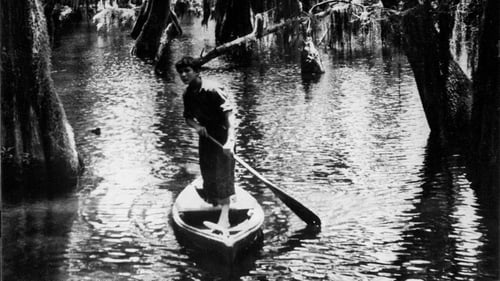
Associate Producer
The idyllic life of a young Cajun boy and his pet raccoon is disrupted when the tranquility of the bayou is broken by an oil well drilling near his home.

Director of Photography
The idyllic life of a young Cajun boy and his pet raccoon is disrupted when the tranquility of the bayou is broken by an oil well drilling near his home.
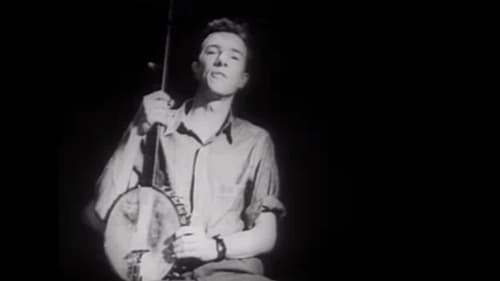
Director of Photography
A short film about Pete Seeger and the birth of banjo music throughout the Southern United States.

Documentary by Jan Sebening and Daniel Sponsel.




















































